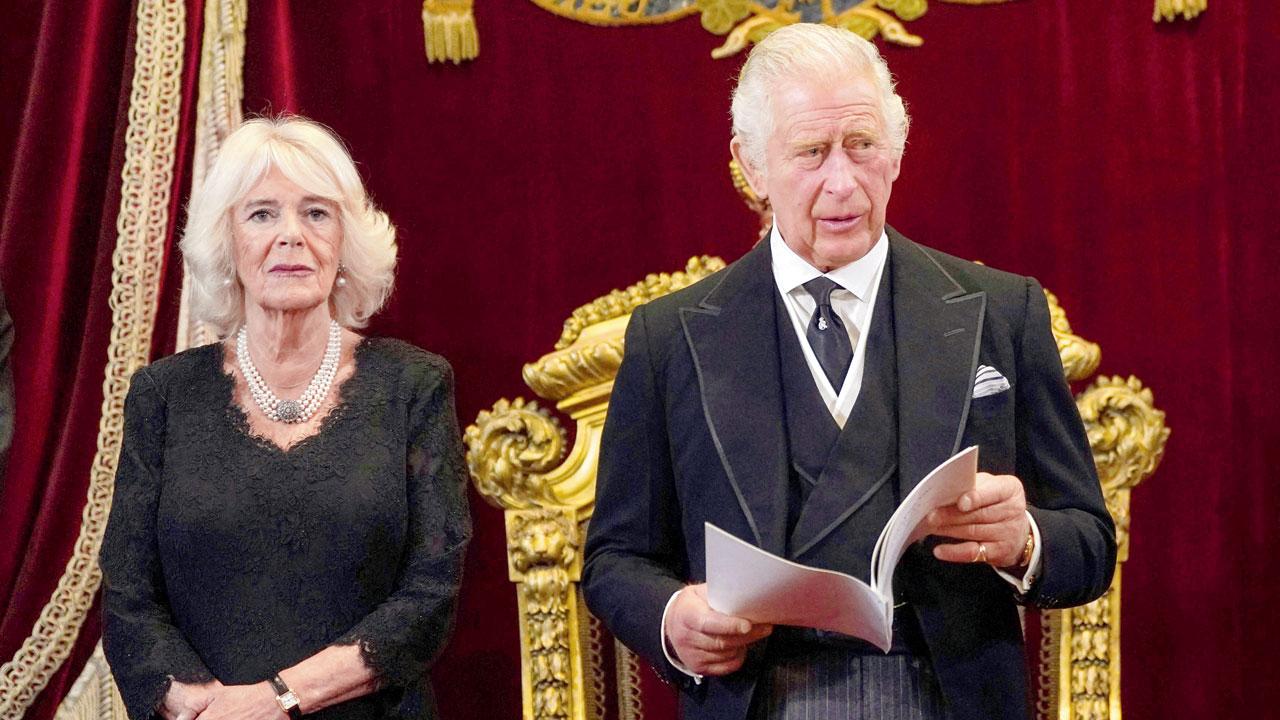King Charles III formally proclaimed monarch marking the end of second Elizabethan era

King Charles III signs an oath to uphold the security of the Church in Scotland at St James’s Palace in London, proclaiming him as the new King. Pic/AFP
King Charles III was officially announced as Britain’s monarch on Saturday, in a pomp-filled ceremony steeped in ancient tradition and political symbolism—and, for the first time, broadcast live. Charles automatically became king when his mother, Queen Elizabeth II, died on Thursday, but the accession ceremony is a key constitutional and ceremonial step in introducing the new monarch to the country.
Scores of senior politicians past and present, including Prime Minister Liz Truss and five of her predecessors, gathered in the ornate state apartments at St James’s Palace for the meeting of the Accession Council. They met without Charles, officially confirming his title, King Charles III. The king joined them to make a personal declaration, vowing to follow his mother’s “inspiring example” as he took on the duties of monarch.

Britain’s Camilla, Queen Consort, listens as Britain’s King Charles III speaks during a meeting of the Accession Council inside St James’s Palace in London on September 10, 2022. Pic/AFP
“I am deeply aware of this great inheritance and of the duties and heavy responsibilities of sovereignty which have now passed to me,” he said. Speaking of his personal grief, he said: “I know how deeply you and the entire nation, and I think I may say the whole world, sympathise with me in this irreparable loss we have all suffered.”
The new king formally approved a series of orders—including one declaring the day of his mother’s funeral a public holiday. The date of the state funeral has not been announced, but it is expected to be around Sept 19. This is the first time the accession ceremony has been held since 1952, when Queen Elizabeth II took the throne.
Charles was accompanied at the ceremony by his wife Camilla, the Queen Consort. The ceremony ended with a royal official publicly proclaiming King Charles III the monarch. Charles also said in his address that he had made his eldest son William, 40, the new Prince of Wales, the title that had been his for more than 50 years and is traditionally held by the heir to the throne. William’s wife Kate becomes Princess of Wales, a role last held by the late Princess Diana.
David White, the Garter King of Arms, made the proclamation flanked by trumpeters in gold-trimmed robes before leading cheers—“hip, hip, hooray!”—for the new king. Gun salutes rang out in Hyde Park, at the Tower of London and at military sites around the UK. The proclamation was also be read out in the medieval City of London and at other locations across the UK.
Two days after the 96-year-old queen died at Balmoral Castle in Scotland following an unprecedented 70 years on the throne, people still came in thousands to pay their respects outside Buckingham Palace in London. Charles looked to both the past—noting his mother’s unwavering “dedication and devotion as sovereign”—and the future, seeking to strike a reassuring note of constancy that his will be a 21st-century monarchy. He was greeted with shouts of “Well done, Charlie!” and “God save the king!”
Britain is holding a period of mourning for the queen. Her body will be brought from Balmoral, first to Edinburgh and then to London, where she will lie in state before a funeral at Westminster Abbey. The date for that has not been announced but it is expected in a little over a week’s time.
 Subscribe today by clicking the link and stay updated with the latest news!" Click here!
Subscribe today by clicking the link and stay updated with the latest news!" Click here!










